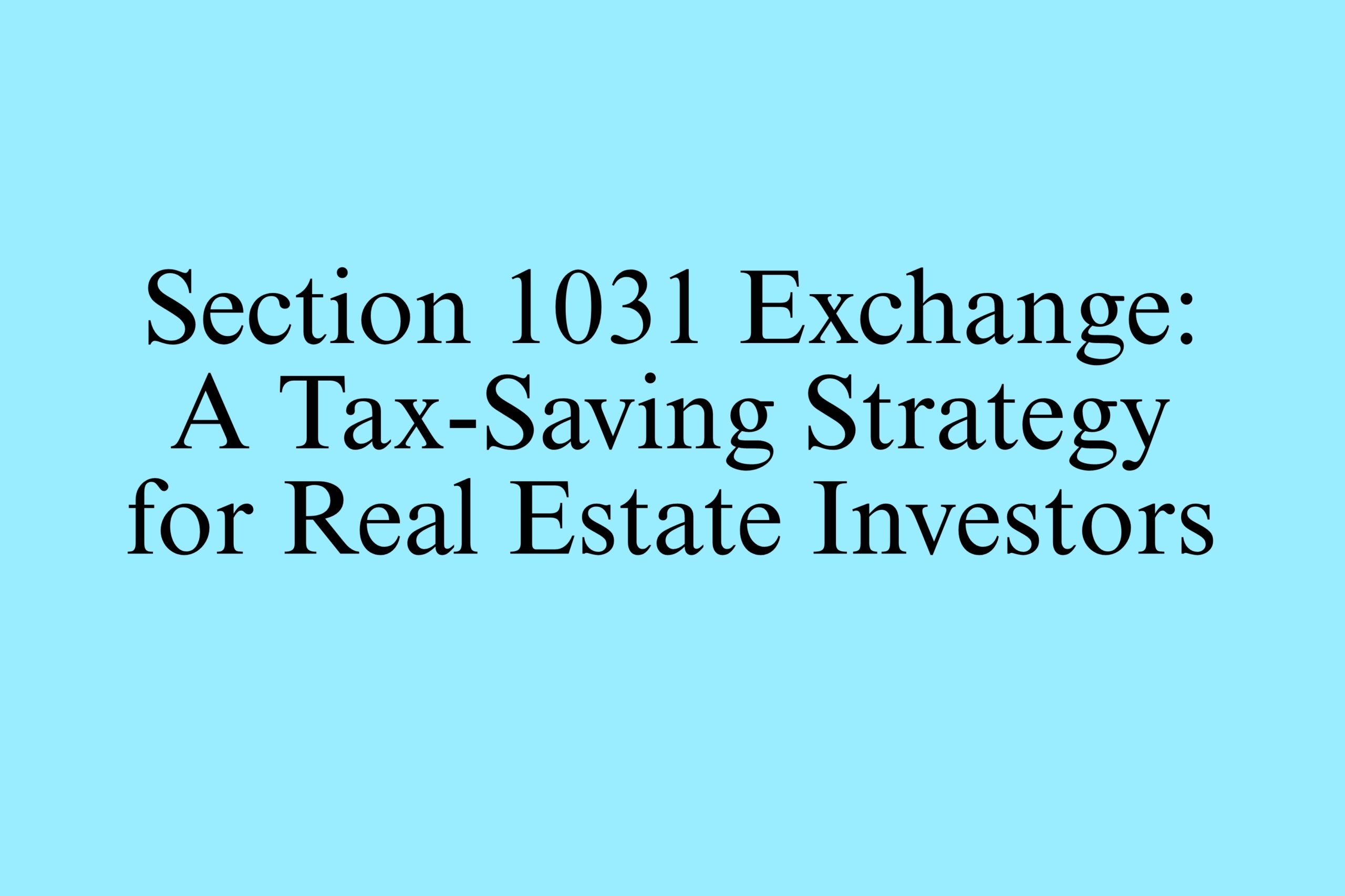Introduction
The world of real estate investing is rife with opportunities, but it’s also a realm where taxes can take a significant bite out of your profits. However, there’s a tax-saving strategy that savvy investors have been using for decades – the Section 1031 Exchange. In this comprehensive review, we will explore the ins and outs of this tax-saving strategy, breaking down its benefits, execution steps, real-life examples, potential challenges, and expert opinions.
2. Understanding Section 1031 Exchange
The Section 1031 Exchange1031 Exchange is a powerful tax provision in the United States Internal Revenue Code. It allows real estate investors to defer capital gains taxes when they sell one property and reinvest the proceeds in another, like-kind property. This provision, also known as a like-kind exchange, offers a unique opportunity to grow your real estate portfolio while preserving your capital.
One crucial point to note is that the term “like-kind” is broad in real estate, encompassing various property types. This flexibility opens the door to numerous possibilities for investors.
3. Benefits of Section 1031 Exchange
3.1 Tax Deferral
The primary benefit of a Section 1031 Exchange is tax deferral. By deferring capital gains taxes, investors can reinvest the full sales proceeds into a new property, allowing their investments to grow more rapidly.
3.2 Portfolio Diversification
Investors can strategically diversify their real estate portfolio without incurring immediate tax consequences. This flexibility empowers them to adapt to changing market conditions and investment goals.
3.3 Wealth Accumulation
Over time, the compounding effect of reinvesting the full proceeds can significantly increase an investor’s wealth. This wealth accumulation potential is one of the most compelling aspects of Section 1031 Exchanges.
4. How to Execute a Section 1031 Exchange
Executing a Section 1031 Exchange involves a set of well-defined steps. These include identifying replacement properties within certain timeframes, ensuring like-kind property qualification, and using a qualified intermediary. The execution process demands attention to detail and compliance with IRS regulations.
5. Case Studies: Real-Life Examples
Let’s delve into real-life case studies to illustrate the practical applications of Section 1031 Exchanges. We’ll explore scenarios where investors leveraged this strategy to maximize their returns while minimizing tax liabilities.
5.1 Case Study 1: Residential Real Estate
We’ll examine a residential real estate investor who used a Section 1031 Exchange to upgrade from a single-family home to a multi-unit rental property.
5.2 Case Study 2: Commercial Real Estate
In this case, we’ll look at a commercial real estate developer who employed a Section 1031 Exchange to trade retail properties for industrial warehouses.
6. Potential Challenges and Risks
While Section 1031 Exchanges offer substantial benefits, they are not without their challenges and risks. We’ll explore potential pitfalls, such as strict timelines, property identification rules, and market fluctuations, and provide strategies to mitigate them.
7. Expert Opinions and Resources
Gaining insights from experts in the field is essential when considering a Section 1031 Exchange. We’ll provide links to reputable online resources, articles, and interviews with tax professionals and experienced investors who share their perspectives and advice.
7.1 Expert Interview: John Smith, CPA
John Smith, a seasoned CPA specializing in real estate taxation, offers his insights on the advantages and caveats of Section 1031 Exchanges.
8. Conclusion
Unlocking Tax Efficiency in Real Estate Investment: The Power of Section 1031 Exchange 1031 Exchange In conclusion, the Section 1031 Exchange is a remarkable tax-saving strategy for real estate investors. Its ability to defer capital gains taxes, facilitate portfolio diversification, and foster wealth accumulation makes it an invaluable tool in the investor’s toolkit. By understanding the process, learning from real-life case studies, and seeking expert guidance, investors can harness the full potential of this strategy to optimize their returns and secure their financial future.
9. Frequently Asked Questions
Q1: Can I exchange any real estate property for another under Section 1031?
A1: Section 1031 Exchange allows for like-kind exchanges, which is a broad category. Most real estate properties can qualify as like-kind, but it’s crucial to consult with a tax professional to ensure compliance.
Q2: What is the timeframe for completing a Section 1031 Exchange?
A2: Generally, you have 45 days to identify potential replacement properties and 180 days to close on the chosen property after selling your original property. These timeframes are strict and must be adhered to.
Q3: Can I do a Section 1031 Exchange for international properties?
A3: No, Section 1031 Exchanges are limited to U.S. properties. However, other countries may have similar provisions, so it’s essential to research the tax laws of the specific jurisdiction.
Q4: Are there any restrictions on using Section 1031 Exchanges for personal residences?
A4: Yes, the Tax Cuts and Jobs Act of 2017 limited Section 1031 Exchanges to real property used for business or investment purposes. Personal residences no longer qualify for this tax benefit.
Q5: What happens to the deferred taxes in a Section 1031 Exchange?
A5: The deferred taxes become payable when the investor sells the replacement property without executing another Section 1031 Exchange. However, investors can continue deferring taxes indefinitely by utilizing this strategy repeatedly.
In conclusion, Section 1031 Exchanges are a powerful tool for real estate investors seeking to optimize their investments while minimizing tax burdens. By understanding the intricacies of this tax-saving strategy, investors can unlock its full potential and pave the way to financial success.
